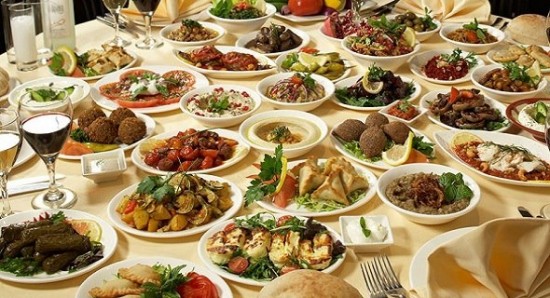When I was growing up in Uruguay, my grandma always made dishes that we considered to be Armenian food. But when I visited Armenia, the food was very different. My family, coming from parts of an ancient Armenian kingdom that had been conquered by the Ottoman empire, in this case, Marash, had preserved traditions that had complex mixed origins in those regions. Many of the dishes I grew up with are unusual in Armenia and easy to find in the kitchens of Istanbul.
For this reason, I have always been fascinated with the topic. What is Armenian and what is Turkish? Unesco has given Armenians lavash, the thin bread made by slapping dough against the sides of a hot clay oven known as tonir. But many other shared dishes are considered Ottoman heritage. I was once fascinated by a New Yorker article about a man who is trying to preserve that heritage, cooking recipes exactly as great-great-grandmothers would. And yet I have been unable to find someone doing this kind of preservation work for traditionally Armenian dishes.
Last year, I had a little project to go spend some time in Istanbul researching the common origins of Ottoman and Armenian cuisine, which I hope to materialize someday. Today, I want to share with you some ancient Armenian dishes, which tourists should definitely try during their travel around Armenia. Everyone knows about tolma, khorovats, kyufta, and basturma. These traditional dishes, while less well-known, will surely delight the most demanding palates.
Ker u Sus
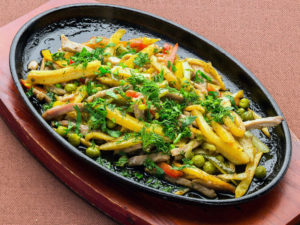 The Armenian dish ker u sus has been prepared in the country since ancient times. Its name has a very funny translation: “eat and be silent.” There is an interesting story connected with this name´s origin. As folk tradition would have it, in a little Armenian village family, a small boy ate very badly, which greatly upset his mother. He refused nutritious food, like meat, and loved only potatoes. One day, the woman, tired of trying to plead with her son, started frying potatoes for dinner. At the same time she decided to make a stew of beef with hot pepper for her husband and herself. As she was hurriedly serving the meal, the woman didn’t notice how she put the potatoes together with the spicy meat on the boy’s plate. The boy began to cry, and his mother yelled out in Armenian: eat and be silent! Nobody knows whether this story is true or not, but the fact remains: this is one of the oldest dishes of national cuisine. It is prepared quite easily: sliced potatoes are fried with onion and then stewed with beef. Hot pepper and fresh herbs are added to complete the recipe.
The Armenian dish ker u sus has been prepared in the country since ancient times. Its name has a very funny translation: “eat and be silent.” There is an interesting story connected with this name´s origin. As folk tradition would have it, in a little Armenian village family, a small boy ate very badly, which greatly upset his mother. He refused nutritious food, like meat, and loved only potatoes. One day, the woman, tired of trying to plead with her son, started frying potatoes for dinner. At the same time she decided to make a stew of beef with hot pepper for her husband and herself. As she was hurriedly serving the meal, the woman didn’t notice how she put the potatoes together with the spicy meat on the boy’s plate. The boy began to cry, and his mother yelled out in Armenian: eat and be silent! Nobody knows whether this story is true or not, but the fact remains: this is one of the oldest dishes of national cuisine. It is prepared quite easily: sliced potatoes are fried with onion and then stewed with beef. Hot pepper and fresh herbs are added to complete the recipe.
Aveluk Soup
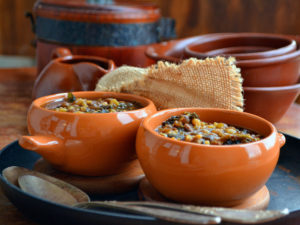 Aveluk or horse sorrel is a very nourishing plant, and a staple of Armenian cuisine. Armenians collect it in the mountains, dry it, and then prepare many delicious dishes from it. In Armenia, they are cooked mainly with the onset of cold weather, as aveluk is not only tasty, but also very effective against colds. Aveluk is used to make many delicious soups. Some of them include bulgur or lentils, fresh garlic, and dried fruit, such as sweet dried apricots and sour plums.
Aveluk or horse sorrel is a very nourishing plant, and a staple of Armenian cuisine. Armenians collect it in the mountains, dry it, and then prepare many delicious dishes from it. In Armenia, they are cooked mainly with the onset of cold weather, as aveluk is not only tasty, but also very effective against colds. Aveluk is used to make many delicious soups. Some of them include bulgur or lentils, fresh garlic, and dried fruit, such as sweet dried apricots and sour plums.
Tshvzhik
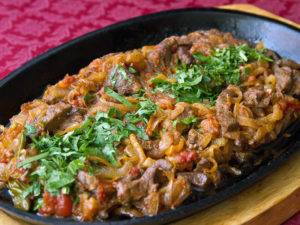
Armenian national cuisine is famous for its tasty and various meat dishes. Armenians have also interesting recipes featuring offal. One of the most popular is tzhvzhik, a dish of roasted beef liver, which is stewed together with pre-fried onion and tomato paste. It is seasoned with salt, pepper, and cilantro.
Kaurma
Kaurma is another stellar meat dish Armenians have been preparing since immemorial times. One can even say that kaurma is as old as lavash. In ancient times, when there were no refrigerators, Armenians learned how to preserve meat in fat and store it for a long time. Kaurma is mainly cooked in the slaughter season, that is, in the fall. First gigot is salted then boiled and lightly fried. Then the meat is placed in clay pots and covered with melted butter.
Havits
You may be surprised to learn that Armenians cook porridge from fried flour. It is rare to meet an Armenian, who has never had this type of porridge for breakfast. Nobody remembers who and when invented this unusual dish. You just need to fry the flour in a frying pan to a golden color, then add butter and sugar, and then cook it in hot water, until thick, stirring constantly. You can also add some milk. Havits can be served topped with cinnamon and raisins.
Nishasta
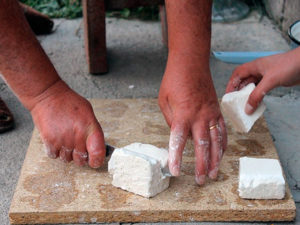 Nishasta is one of the rarest, most mysterious dishes of Armenian cuisine. Few modern Armenians know about this dish, which was traditionally known as “a recipe for longevity and a cure for many diseases.” Traditionally, nishasta was prepared by Javakhk Armenians.
Nishasta is one of the rarest, most mysterious dishes of Armenian cuisine. Few modern Armenians know about this dish, which was traditionally known as “a recipe for longevity and a cure for many diseases.” Traditionally, nishasta was prepared by Javakhk Armenians.
The preparation process starts at the beginning of autumn after the harvest of grain crops. First, wheat is poured into huge boiling pots, so that a quarter of the container remains empty. Then, they are filled with water and left out in the sun. Within forty days, the grain should brew in the water, and every day the Armenian housewives change the water. After the necessary period, when the nishasta ripens, the process of crushing the wheat begins.
In ancient times, wheat was pressed manually through cotton cloth, now it is passed through a meat grinder and then strained for several times to get rid of the husks. Thus at the bottom of huge basins white homogeneous mass settles down, which after hardening is covered with a cloth and sprinkled with ash, so that it absorbs excess moisture. After the completion of this process, the nishasta is dried and cut into pieces.
By the way, the whole process takes at least two months. It is said that this recipe was passed from generation to generation. On the day when everything was ready, all the relatives gathered at one table to try the dish prepared from nishasta. It was soaked in water until completely dissolved, and then brewed with sugar and butter.
It is said that in this form, wheat is very easily digested, cleanses the body, restores damaged tissue, nourishes, normalizes metabolism, and saturates with vitamins and microelements. It is also said that the dish can cure headaches. If you want to try the best nishasta, then it’s best to go to Akhalkalaki, Georgia. This region was once part of Great Armenia, but it is now located in the territory of Georgia. The Armenians, who constitute the majority of the town´s population, sell nishasta at the agrarian market of Akhalkalaki. From it, you can prepare a solution you can drink as medicine.
